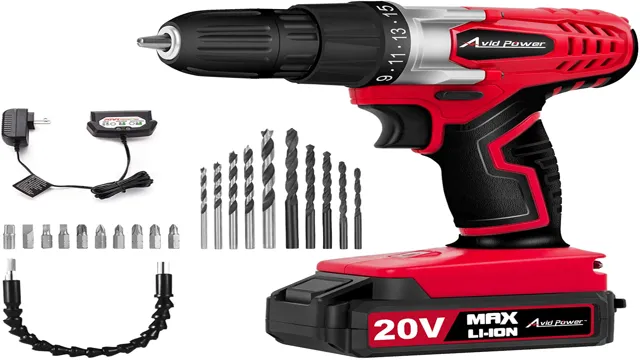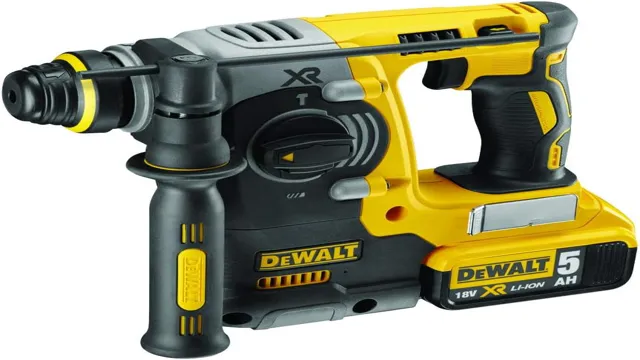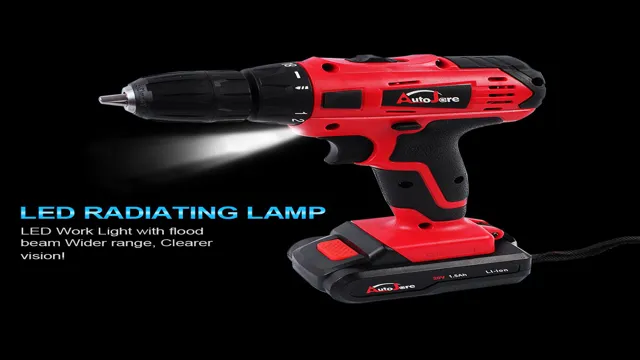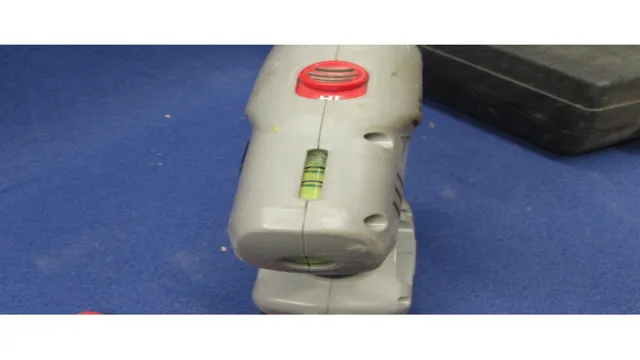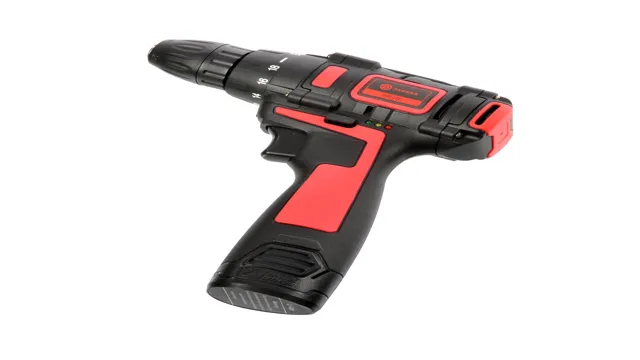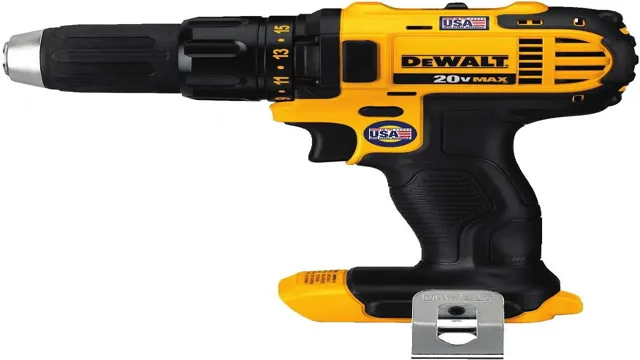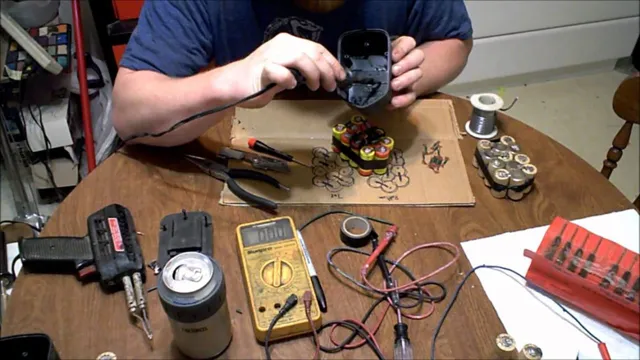What Kind of Batteries are Used in a Cordless Drill: Your Guide to Choosing the Right Power Source
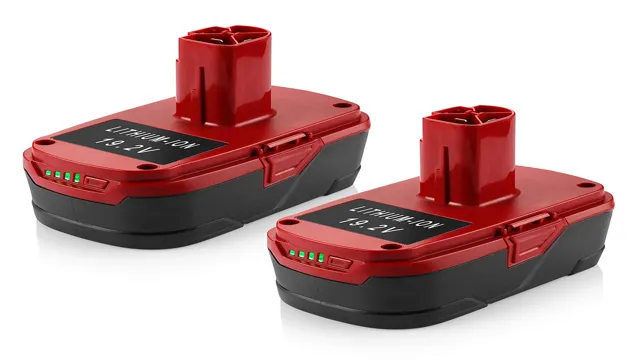
If you’re a DIY enthusiast or a professional contractor, having reliable cordless drill batteries is essential for completing your projects efficiently. However, with so many options available on the market, choosing the right battery can be challenging. That’s where this comprehensive guide comes in! We’ve compiled everything you need to know about cordless drill batteries, so you can make an informed decision and power up your tools with confidence.
Whether you’re looking for longer battery life or faster charging times, we’ve got you covered. So, let’s dive in and explore the world of cordless drill batteries together!
Types of Batteries Used in Cordless Drills
Cordless drills have become an essential tool for DIY enthusiasts and professionals alike. The type of battery used in cordless drills is a crucial factor to consider before buying one. There are mainly two types of batteries used in cordless drills: nickel-cadmium (Ni-Cd) and lithium-ion (Li-ion).
Ni-Cd batteries are the older type and use a chemistry that produces a lot of power but is prone to self-discharge and memory effect. In contrast, Li-ion batteries are the newer technology and provide more power while being smaller and lighter. They also have a longer life span and don’t have a memory effect like Ni-Cd batteries.
Some cordless drill models use both types of batteries interchangeably, while others are compatible only with one type. As a general rule of thumb, Li-ion batteries are the better option if you are looking for a long-lasting, efficient, and reliable performance.
1. Nickel-Cadmium (Ni-Cad) Batteries
Cordless drills are powered by batteries, and the type of battery used can make a big difference in the tool’s performance. One common type of battery used in cordless drills is Nickel-Cadmium, or Ni-Cad, batteries. These batteries have been around for many years and have a proven track record of reliability.
They are also relatively inexpensive compared to some other types of batteries. However, they have some downsides as well. Ni-Cad batteries tend to have a shorter life cycle compared to other types of batteries, and they can also suffer from a “memory effect” if they are not charged and discharged correctly.
This can lead to a decrease in the battery’s overall capacity over time. Overall, Ni-Cad batteries can be a good choice for those on a budget, but those looking for longer-lasting and more efficient batteries may want to consider other options.

2. Lithium-Ion Batteries
When it comes to cordless drills, there are generally two types of batteries used, nickel-cadmium (NiCad) and lithium-ion (Li-ion) batteries. NiCad batteries have been around for a while and are known for their affordability, but they have some downsides. They are heavy, have shorter runtimes, and take longer to charge compared to Li-ion batteries.
On the other hand, Li-ion batteries are lighter, have longer runtimes, and shorter charge times, which makes them a better option for cordless drills. They are also more expensive than NiCad batteries, but their benefits outweigh the cost for most users. So if you’re in the market for a cordless drill, consider getting one with a Li-ion battery as they offer more power and convenience.
3. Nickel-Metal Hydride (NiMH) Batteries
NiMH batteries are one of the three main types of batteries used in cordless drills. These batteries are known for their high energy density and are a popular choice for power tools because they can provide long-lasting power. Unlike other rechargeable batteries, NiMH batteries are less prone to memory effect, which is when a battery loses its maximum energy capacity over time.
However, NiMH batteries still have their limitations and are known for their slower charging times and shorter lifespan compared to other batteries. Nonetheless, NiMH batteries are an affordable option for those in need of a cordless drill battery replacement. With proper use and maintenance, NiMH batteries can provide reliable power for a variety of projects.
Advantages and Disadvantages of Each Type
Cordless drills require batteries to function, and there are two main types: nickel-cadmium (NiCd) and lithium-ion (Li-ion). NiCd batteries are the older, more traditional option. They are cheaper, but less efficient than Li-ion batteries.
NiCd batteries also have a higher risk of overheating and being damaged by overcharging. However, they are more durable and reliable in cold temperatures. Li-ion batteries are newer and more expensive.
However, they have a higher energy density and are generally lighter and more compact than NiCd batteries. They are more efficient, hold their charge longer, and do not have a memory effect, which can damage the battery over time. However, Li-ion batteries are more sensitive to extreme temperatures and can fail prematurely if not charged properly.
You May Also Love:
Overall, Li-ion batteries are the superior choice for modern cordless drills, but NiCd batteries may be suitable for occasional or light use.
1. Ni-Cad Batteries
Ni-Cad batteries are an old and reliable type of rechargeable battery that has been used for years. One of the main advantages of Ni-Cad batteries is their ability to deliver high levels of current. They are also very durable and can withstand extreme temperatures.
However, these batteries do have some disadvantages. They are prone to memory effect, meaning that if they are not fully discharged before being recharged, they will lose their capacity over time. Another disadvantage is that they are not environmentally friendly, as they contain toxic metals and require special disposal.
Despite these drawbacks, Ni-Cad batteries are still used in certain applications, such as in power tools and emergency lighting.
2. Lithium-Ion Batteries
When it comes to batteries, two types stand out: lead-acid batteries and lithium-ion batteries. Lead-acid batteries have been around for over a century and are still widely used today. They are relatively inexpensive and have a long life span.
However, they are heavy and require regular maintenance, including adding distilled water and ensuring proper ventilation. In contrast, lithium-ion batteries are lightweight and require minimal maintenance. They also hold a charge longer and can handle more cycles.
But they are more expensive and can be dangerous if not handled properly. Ultimately, the choice between lead-acid and lithium-ion batteries comes down to the specific needs of the application and the user’s budget.
3. NiMH Batteries
NiMH batteries are a type of rechargeable battery that has become increasingly popular in recent years. As with any type of battery, NiMH batteries have advantages and disadvantages that should be considered before deciding whether to use them. One of the main advantages of NiMH batteries is that they have a higher energy density than their predecessors, which means that they can store more energy in a smaller space.
Another advantage of NiMH batteries is that they are less prone to the “memory effect” than other types of rechargeable batteries, which means that they can be recharged more often without losing their ability to hold a charge. However, there are also some disadvantages to using NiMH batteries, such as a higher self-discharge rate and the fact that they can be damaged if they are overcharged. Overall, when considering the advantages and disadvantages of NiMH batteries, it is important to think about the specific needs of your device and to weigh the benefits and drawbacks of each type of battery before making a decision.
Factors to Consider When Choosing a Battery
When it comes to cordless drills, the kind of batteries being used can affect its overall performance. The most common types of batteries used in cordless drills are NiCad, Lithium-Ion, and NiMH. NiCad batteries are the least expensive, but also the heaviest and have a shorter run time compared to Lithium-Ion and NiMH batteries.
Lithium-Ion batteries provide longer run time and are lightweight, but can be pricier. NiMH batteries are the most eco-friendly and provide a good balance of run time and cost. Other factors to consider when choosing a battery include the voltage and amp hours, which dictate the power and duration of the battery respectively.
Ultimately, the battery you choose depends on your specific needs and budget.
1. Battery Life
When choosing a battery, one of the most important factors to consider is its battery life. You don’t want to end up with a battery that runs out quickly and leaves you high and dry when you need it the most. So what determines the battery life? There are several factors, including the type of battery, its capacity, and the usage patterns.
For instance, if you are using a lithium-ion battery, it would have a longer lifespan as compared to a Nickel Cadmium battery. Similarly, if you’re using an app that consumes a lot of battery, your battery can run out faster. Capacity is another crucial factor to consider, as the higher the capacity, the longer the battery will last.
So, when choosing a battery, it is essential to know your usage patterns to ensure that you select a battery that can last according to your needs. Overall, taking account of these factors will help you choose a battery that has a long life and can work efficiently for all your needs.
2. Charging Time
When selecting a battery, charging time is an important factor to consider. You should be aware of how long a battery takes to charge because it can affect the overall functionality of the device and your productivity. Some batteries may take longer to charge than others, and it can vary depending on certain factors like the battery capacity, input power, and usage patterns.
If you need a battery with fast charging capabilities, you might want to go for a lithium-ion battery, which has a shorter charging time compared to other battery types. However, it’s worth noting that even lithium-ion batteries can take longer to charge if the input power is too low or if the battery is heavily used. Therefore, it’s important to consider your specific charging needs and do some research on the battery type and its charging capabilities to ensure you make an informed decision and get the right battery for your device.
3. Price
When it comes to choosing a battery, the price is a significant factor that you must consider. Before making a purchase, ensure that you have set a budget that will guide you in selecting the appropriate battery for your needs. Different types of batteries come with distinct price ranges, so knowing what you can afford allows you to narrow down the options quickly.
However, don’t just go for the cheapest offering in the market. Consider the quality, durability, and lifespan that the battery provides. A more expensive battery may save you money over time as it performs better, delivers consistent results, and lasts longer.
It’s all about finding the right balance between cost and performance to get the most bang for your buck. So, make sure to compare different batteries’ prices and features before settling on a specific battery type. In the end, paying a little extra for quality and durability can save you a considerable amount of money in the long run.
Conclusion
In conclusion, the batteries used in a cordless drill are not your average AA or AAA batteries you find lying around the house. They are powerful lithium-ion batteries specifically designed for high-performance and long-lasting use. So, next time you need to tackle a project with a cordless drill, make sure you have the right battery on hand to drill, baby, drill! “
FAQs
What type of batteries are commonly used in a cordless drill?
The most common types of batteries used in cordless drills are lithium-ion batteries and nickel-cadmium batteries.
Are lithium-ion batteries better than nickel-cadmium batteries for cordless drills?
Yes, lithium-ion batteries are generally considered better than nickel-cadmium batteries for cordless tools because they are more lightweight, have a longer lifespan, and have a higher power output.
How long do cordless drill batteries typically last before needing to be recharged?
The lifespan of a cordless drill battery depends on many factors, including the type of battery, the usage of the drill, and the battery’s condition. On average, a cordless drill battery can last anywhere from 30 minutes to several hours before needing to be recharged.
Can you use any type of battery in a cordless drill?
No, not all types of batteries are compatible with cordless drills. It is important to use the type of battery specified by the manufacturer for your specific drill model.
How do you replace the battery in a cordless drill?
The process of replacing the battery in a cordless drill varies depending on the model. However, most models require you to remove the old battery by pressing a release button or lever, and then insert the new battery in the same manner.
Is it necessary to completely drain the battery before recharging a cordless drill?
No, it is not necessary to completely drain the battery before recharging. In fact, it is recommended to recharge the battery before it reaches a fully discharged state.
How can you prolong the lifespan of a cordless drill battery?
To prolong the lifespan of a cordless drill battery, avoid exposing it to extreme temperatures, store it in a cool and dry place, and use the drill regularly to prevent the battery from fully discharging.

